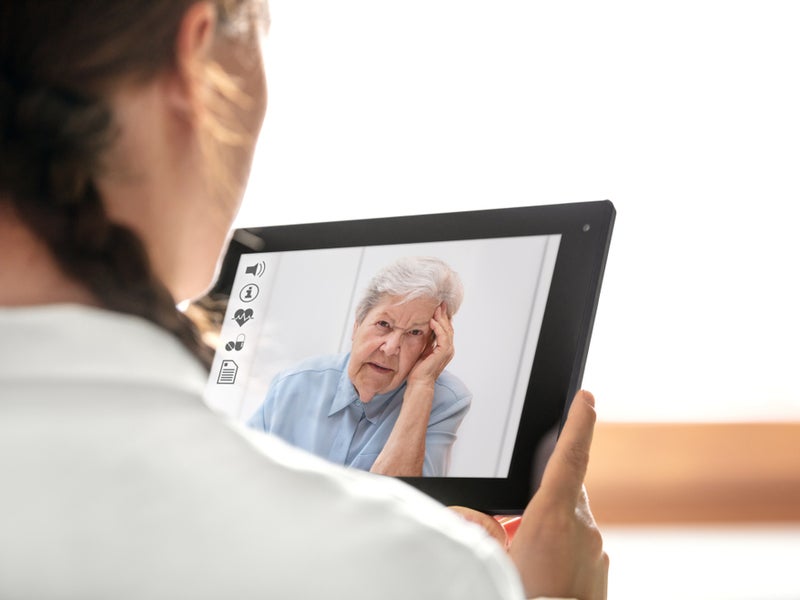
Elderly people in nursing homes make frequent hospital visits, and are often sent to the emergency room with complaints, which would be considered minor in younger, healthier patients. However, a disorientating hospital visit can itself trigger a decline in health for an older person, as they are taken out of familiar surroundings and placed into a noisy, hectic environment away from the carers and clinicians they see every day.
All things considered, telehealth seems like the ideal solution to this problem. Using mobile technology to conduct remote doctor’s visits and monitor patients from afar extends the reach of specialised clinicians into nursing homes. Theoretically, this could drastically cut down the number of nursing home hospital admissions – around 66% of which are thought to be potentially avoidable.
Research from the Now Healthcare Group indicates that NHS England could save £7.5bn through investment in telehealth, so it doesn’t seem like a leap to assume that these technologies may well be able to help save the UK’s £46.2bn adult social care industry a pretty penny too.
Living in the dark ages
However, this kind of investment just isn’t happening, for more reason than one.
Now Patient chief operating officer Tim Ng says: “The NHS is still in its infancy of rolling out digital health. The adoption across social care, no matter how beneficial it is seen, looks to be slow. Many social care providers are tied into lengthy contracts with providers of services, and amends cannot be made quickly.
“There is a lot of inertia too. The tech is new and people making the decisions are either scared to invest or sceptical at how beneficial it will be.”
The NHS’ slow digitisation process has been criticised, both outside and inside the organisation, with NHS England chief clinical information offices Dr Simon Eccles describing the service as living in the “dark ages” during the 2019 NHS Expo conference. Despite headline-grabbing stories of the NHS AI lab, there’s a huge gap between research innovations and the daily lived experiences of junior doctors and patients.
During the same conference, Manchester University Foundation Trust consultant Binita Kane warned of this disconnect, saying: “[Junior doctors] always get really cross with Matt Hancock talking about AI because their computer on the ward doesn’t work. We have to bridge that gap somehow.”
This disconnect expands into the adult social care sector.
Care 4 Quality managing director Helen Fuller says: “Internet was one of the biggest barriers in the services I’ve seen. Some nursing homes are in old, converted buildings and there’s an issue generally with internet and WiFi, which leads to a basic communication barrier with telemedicine.”
Internet illiteracy
Alongside inherently ropey internet connections, which can interfere with telehealth, Fuller says understaffed nursing homes with overworked and time-pressured staff, simply do not have the time or the resources to adequately engage carers in telecare applications.
Plus, for all the difficulty involved in engaging care home staff with telecare, it’s even harder to engage patients.
Fuller says: “I was part of a trial project for a home up North – they tried to implement a telemedicine system that monitored basic health statistics and followed these up with online consultations via video link.
“The residents didn’t like that medium, using a video to talk to somebody, they just didn’t get on with it very well because it’s not something they’re familiar with. There’s also difficulty around obtaining consent for that to take place, and they couldn’t hear people, so that was a barrier.”
With nearly four million people over 65 having never used the internet in the UK, the fact that nursing home residents struggle to engage with a remote doctor’s consultation is hardly surprising. Telehealth could be a financial boon to adult social care services in both the NHS and the private healthcare sector, but implementing it appears far easier said than done.
Fuller says: “If it’s rolled out and managed properly, with a clear framework in place to make it clear what the goals are for a nursing home to achieve, then I think telehealth can have a positive impact. Maybe with a younger client group it would work much better. It’s an interesting one on many different levels.”



